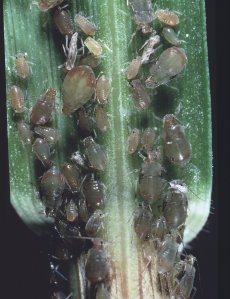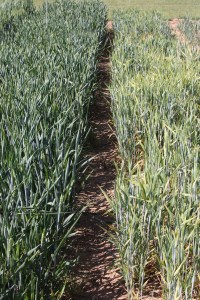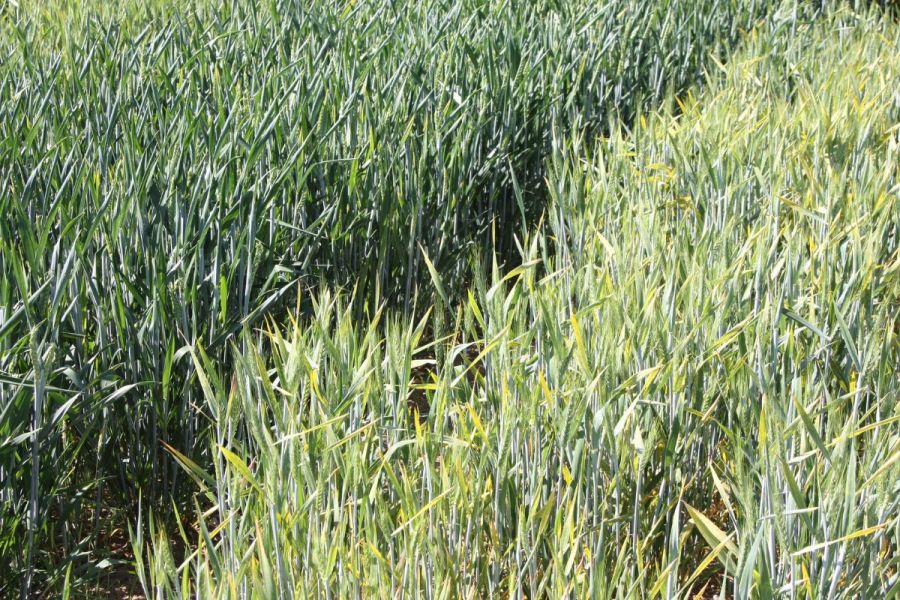What if growers never needed to worry about BYDV ever again? CPM explores whether that dream could soon become a reality.
“Farmers can drill a resistant variety and pretty much forget about BYDV, it’s doing all of the work for you.”
By Janine Adamson

Farmers care about the environment and how they’re perceived so resistant varieties are a way to overcome a problem without compromise, says Lee Bennett.
Barley yellow dwarf virus (BYDV) can cause yield losses of up to 60% in winter wheat and, in some cases, result in total crop failure. For many years, neonicotinoid seed treatments provided protection, but their withdrawal in 2019 left a lone chemical control option – pyrethroids.
With milder autumns offering the perfect breeding ground for aphids, the BYDV carrier, what can growers do to ensure their crop’s protected without over-spraying the one remaining insecticide?
Seed trade expert, RAGT’s Lee Bennett discusses how the solution lies in genetics in what he believes is a socially responsible way to protect crops from the disease.
What’s BYDV?
BYDV is a plant virus vectored by infected aphids, mainly the bird cherry-oat and grain aphid. It’s transmitted when the insect feeds on the phloem (sap) found in a plant’s foliage, stems and flowers.

BYDV is a plant virus vectored by infected aphids, mainly the bird cherry-oat (pictured) and grain aphid.
The virus is introduced in two ways – indirect and direct transfer. The most common is indirect transfer from grass or cereal volunteers by winged aphids, whereas direct transfer is by wingless aphids that overwinter on the green bridge.
Symptoms-wise, the clue’s in the name – dwarfing. Early signs include leaf discolouration, with stunted plant growth as the season progresses. Red tipping, or blushing, can also occur as a result of the stress the plant is enduring. Crucially, early season infection can result in severe crop losses.
As well as the obvious barley host, wheat and oats also succumb to the virus, making it a significant cereal crop disease. It has huge economic impact for UK growers, particularly those in the south where temperatures are warmer and aphid populations proliferate.
Worryingly, farming has perhaps become complacent because BYDV’s threat was removed by neonicotinoid seed treatments. But they aren’t available anymore and the virus is very much still out there.
How’s it controlled?
As with all good pest management, control begins with monitoring. In this case, that’s using sticky traps to observe site-specific aphid activity and infectivity. There’s also online support from AHDB and Rothamsted Research on forecasting to help ascertain risk levels.
For actual control, there are cultural methods that can be deployed. Delayed drilling makes the most of cooler temperatures when aphid numbers are less likely to multiply, whereas destroying the green bridge removes a host. Beneficial insects, such as predatory beetles and spiders, help to reduce actual aphid numbers, although don’t eradicate the virus.
There’s also value in optimising rotations – selecting lower risk fields, such as those with minimal grassland in the periphery.
Beyond this, a chemical control option does remain in the form of pyrethroid insecticides. Best practice is to use the chemistry alongside the T-sum calculation to optimise timings. This is calculated by subtracting 3oC from the average temperature each day and adding the result to the running total. When T-sum hits 170, spawning occurs and the second generation of aphids emerge.
Every T170, and there could be multiple in a season, there’s a hatch. This is when the damage really occurs. Of course the earlier the crop is drilled, the quicker T170 is reached and with each individual aphid at a different point in its lifecycle, this is happening all of the time.
Why is insecticide use undesirable?
Historically, insecticides have been very indiscriminate and non-selective. Although pyrethroids are much improved compared with chemistry from the past, there’ll be a level of impact on beneficial insects. These don’t just play a role in BYDV control but control other insect pests within the crop.
Pyrethroids can also break down very quickly in sunlight, anywhere between 24hrs and seven days. This means protection is rather limited, the crop is soon exposed to infection again and the sprayer will have to return.
And of course, the higher the frequency of spraying, the greater chance of resistance. This is because when an active ingredient is overused, it initiates a natural selection process within the target pest where the tolerant insects mate, producing resistant offspring. Research has shown that the grain aphid first presented with pyrethroid resistance back in 2011 – more than 10 years ago. This is why it’s so important to use the T-sum calculation to only use pyrethroids when really necessary.
Finally, the government is incentivising farmers to not use insecticides, but going without poses a huge risk for the farmer. There has to be something to fill the gap and support growers.
How can genetics help?
One cultural control method is genetic resistance. Whereas insecticides have to be sprayed regularly throughout the season, resistant varieties are protected from the moment they go into the ground.
How this works for BYDV is, rather than preventing aphid populations or the transmission of the virus, a gene prevents its replication within the plant. The virus itself cannot manifest, instead it’s constrained to the level at which the initial transmission took place. This is alternative control – a true resistance mechanism with virus at a level where the plant can still perform.
This resistance gene Bdv2 has been in development by scientists for two decades. It originates from a distant relative of wheat, Thinopyrum intermedium. It’s taken time to create a variety suitable for the UK market, whereas it’s been commercialised in Australia for more than 20 years.
In 2013, RAGT produced the cross that became RGT Wolverine, Europe’s first BYDV-resistant wheat launched to the market in 2019. This became the first in the Genserus range of varieties.
How has this breeding evolved?

RGT Grouse was promoted to the AHDB Candidate list 2023 as a Group 4 hard variety with resistance to both BYDV and OWBM.
Although genetic resistance is highly sought after, it doesn’t offer a tremendous amount if the agronomic traits of a variety don’t match up. The Bdv2 gene has been harnessed, so it’s now about making constant improvements through new crosses to achieve the required ‘sweet spot’. It’s a continual journey, using learnings from the past 20 years or so, all the while retaining that crucial BYDV resistance.
Late last year, RGT Grouse was promoted to the AHDB Candidate list 2023 as a Group 4 hard variety with BYDV-resistance. What makes this variety special is that it not only fights back against BYDV but also has resistance to orange wheat blossom midge (OWBM). RAGT is now looking to offer this double resistance package in a new bread quality variety. This would mean risk-free, insecticide-free wheat for human consumption. A game-changer.
In the past, breeders have been criticised for yield lag, in that there’s a yield trade off in having resistant genes. To investigate this, RAGT conducted trials comparing BYDV-resistant with non-resistant varieties. With no insecticidal intervention, the resistant varieties rose to the top in terms of yield. In some cases there’s a 1.7t/ha yield advantage, bringing into question whether a yield lag exists.

Compared with insecticides, using resistant varieties means there are no worries about spray conditions and timeliness (resistant vs susceptible lines).
What are its advantages?
Compared with insecticides, using resistant varieties means there are no worries about spray conditions and timeliness. With wind and rain, there’s rarely a good opportunity for spraying these days. A knock-on benefit from that is improved time management.
Also, inputs are expensive. RAGT has calculated that having the Bdv2 resistant gene in a variety equates to just one spray of a pyrethroid, from a cost perspective. For those in the south, they might hit the T-sum threshold four times or more, so that’s a considerable saving.
Importantly, as an industry, farming has to do the right thing. Repeated use of a sprayer doesn’t look amazing to the wider public, as they can associate it with ‘toxic’ pesticides. Farmers do care about the environment and how they’re perceived, resistant varieties are a proactive way to overcome a problem without compromise.
Ultimately, farmers can drill a resistant variety and pretty much forget about BYDV. It’s doing all of the work for you.
This article was taken from the latest issue of CPM. Read the article in full here.
For more articles like this, subscribe here.
Sign up for Crop Production Magazine’s FREE e-newsletter here.




